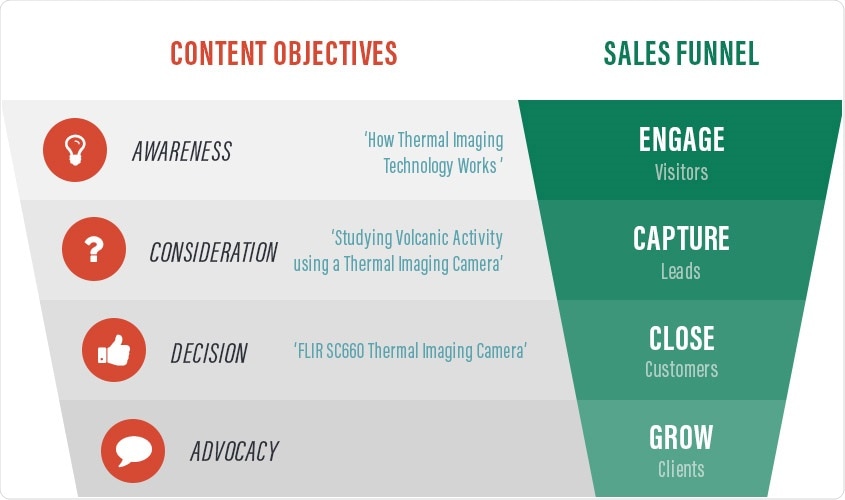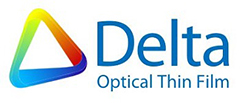.jpg)
How Do Scientists Make Decisions?
Think of the last high value purchase you made. It could be a car, a TV or even a house…
Where was the first place you went to when you began your buying journey?
I doubt you went straight to the Real Estate Agent to buy a house... No, you almost certainly spent 2 hours browsing and searching for your dream property on Realtor.com or Rightmove.
Similarly, it's all too easy to lose an evening to Cars.com, Craigslist or Autotrader - Great starting places to get a feel for the automotive marketplace; no-one wants to rush a big purchase without conducting diligent research.
Now, imagine you are an Academic, a Scientist or an Engineer. You are distinct from other people. You look at problems in a different way. You rely on facts, figures and data to make decisions.
Disruption
Disruption is all around us: Sites like Facebook, Uber and AirBnB have become giants overnight with the simplest of business concepts.
40% of the U.S. Fortune 500 Companies in 2016 were not there 10 years ago
Brian Halligan, the CEO of Hubspot recently pointed out that 40% of the Fortune 500 companies in 2016 were not there 10 years ago - You just need an idea or concept that people will find useful.
The Amazons, eBays, Instagrams, Googles, Sparerooms, Reddits and even the dating apps such as Tinder all have one thing in common: Users.
The best businesses are platforms that bring users together. They facilitate user interactions and collect and use vast amounts of data in valuable ways to harness the "network effect". User attention is the new currency, and platforms with the most users, data and interactions provide the most value to its users and other stakeholders.
But even for Scientific businesses which aren't platforms, the internet has levelled the playing field. The tools are available for smaller, more flexible Sales & Marketing teams to compete with the entire departments (and budgets) of their much larger rivals.
The Buying Process has changed
As little as 10 years ago, you would have gone straight to the showroom or to the realtor to learn about buying a car or a house.
Nowadays of course, if you want to find out about something, you have the answers in the palm of your hand.
There is so much information out there for you, the user, to compare.
Comparing house data is easier than ever: Number of bedrooms, price per square foot, parking spaces and proximity to schools - the information is readily available. Whereas, car buyers use independent reviews to compare engine size, make, model, age and mileage... all through one platform. Buyers can be a lot more scientific in their decision making by using the data available.
Even for smaller purchases, Amazon was the pioneer of the product user review – Consumers in different continents can leave qualitative, almost anecdotal feedback; whether the stitching on an iPad cover was cheap or of a high quality, or if the casing actually lines up with the headphone, camera and power ports.
It all starts with a search
In the modern digital age, these disruptive platforms facilitate interactions between users 24 hours a day, 7 days a week – And it doesn’t stop with buying cars, houses and electronics.
Buyers educate themselves to become more knowledgeable around products, services and applications
In a B2B business context, 10 years ago your customers would have found your equipment and products in a trade magazine.
Today, there is a wealth of information which the buyer can use to educate themselves and become more knowledgeable around a product, technique or application.
And with around 57% of the buying process being completed by the time your prospects even engage a salesperson, it is becoming increasingly important that, as a vendor, you are found at the right time.
Educate don’t sell
No-one really likes to be sold to… least of all Scientists and Academics, so provide them with enough facts and information to educate themselves and help them along their own buyer’s journey.
Awareness Content
Imagine you sell Thermal Imaging equipment; your analytical prospect may find you with a generic search for “How does Thermal Imaging Technology work”. Now would be a great time to engage them with a general interest article or even an infographic on how Thermal Imaging works (it’s a pretty cool technology with a range of useful, real world applications!)
Useful Awareness Content – Explainer videos, Blog Posts, Slide Shares, Infographics, Market Research

Consideration Content
Having read the infographic, the detail-oriented Scientist then reads the application notes which address specific applications of the technology: Studying geothermal activity, biomechanics in sport or quality control in the automotive industry.
Useful Consideration Content – Application Notes, White Papers, eBooks, “How to” articles.
Decision-Making and Advocacy Content
Now the prospect has found out about the technology and how it will benefit them with their specific application, they engage with content that is designed to encourage a commercial transaction. This can be a product profile, a case study or a product video.
As the prospect nears the decision making stage, the modern marketer will particularly enhance the user experience here: Make sure that all the information needed to make an informed decision is readily available and easy to find – Adding a video will increase the likelihood of a data transaction.
User reviews and customer testimonials turn normal customers into advocates of your brand… Our thought leader series focuses on respected scientists and key opinion leaders who discuss their work. The interview effectively doubles as an un-biased review on how a piece of equipment facilitates their research.
Go one step further and answer the FAQs of your customers and even provide training videos to maximize their product user experience.
Useful Decision Making Content – Product Profiles, Customer Testimonials, Case Studies, Thought Leadership interviews.
The Death of a Salesman?
To put this in the perspective of the salesperson who sells Scientific products to the Scientist. It may all seem a touch draconian: “The machines are taking our jobs” which of course is absurd - we are not saying that for one second...
There will always be the need to demonstrate incredibly complex and technical instruments to Scientists as well as close the business. The one difference is that the buyer will be more knowledgeable and well informed for the latter stages of the purchase decision (which is good for everyone, particularly buyers!)
As Brian Halligan put it “In 2006, the website augmented the sales rep, but in 2016 the sales rep augments the website.”
The real challenge is finding imaginative ways to capture the attention of your prospects with a memorable and engaging story which builds rapport with your brand so that they remember you when they are ready to begin their buyer's journey.
We have over 17 years’ experience creating content for Scientists, Engineers and Industry professionals. We are always happy to talk strategy with new contacts and clients. Check out our solutions page or contact us today for a free Marketing consultation.
Listen and Subscribe to the Marketing Science Podcast
Subscribe | Spotify | Stitcher | Apple | iHeartRadio | Mobile | Download
Related Testimonials
-

The AZoNetwork team is great to work with. Their determination to get you the best results possible is extra motivating for us as a company. I would certainly recommend them to a colleague.
Ruud Heijsman FLIR Systems
-

The ability to interrogate your traffic and leads coming through AZoNetwork in AZoIntel is what sets the service apart - Not many sites tie in such quality analytics at the back end.
Lewis Coburn EKF Diagnostics
-

Over the past 6 months our organic traffic has increased 17.51% compared to the same period last year and the number of contact form submissions we’ve seen has risen from 0 in that period to 23
Oliver Pust Delta Optical Thin Film